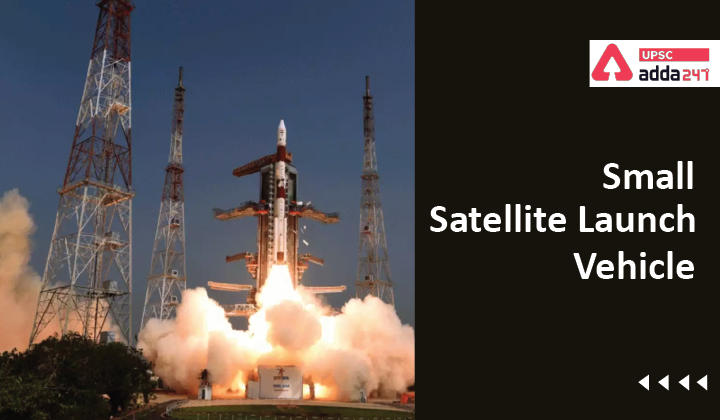Table of Contents
SSLV ISRO: Relevance
- GS 3: Achievements of Indians in science & technology; indigenization of technology and developing new technology.
SSLV India: Context
- Recently, ISRO (Indian Space Research Organisation) has indicated that ISRO’s indigenous new launch rockets, called the Small Satellite Launch Vehicle (SSLV), will make its maiden development flight in April 2022.
SSLV launch vehicle: Key points
- The SSLV is intended to cater to a market for the launch of small satellites into low earth orbits.
- Low earth orbit has emerged in recent years on account of the need for developing countries, private corporations, and universities for small satellites.
- Till now, the launch of small satellites has been dependent on ‘piggy-back’ rides with big satellite launches on ISRO’s work-horse – the Polar Satellite Launch Vehicle (PSLV).
- The launch of the maiden flight of the SSLV was scheduled for July 2019 but has been delayed due to setbacks from the Covid 19 crisis and other issues.
About SSLV
- Small Satellite Launch Vehicle (SSLV) is a 3 stage Launch Vehicle configured with three solid propulsion stages and liquid propulsion-based Velocity Trimming Module (VTM) as a terminal stage.
- SSLV is 2m in diameter and 34m in length with lift off weight of ~120 tonnes.
- The SSLV can carry satellites weighing up to 500 kg to a low earth orbit while PSLV can launch satellites weighing in the range of 1000 kg.
SSLV payload capability
- Single/Multi Satellites – Nano, Micro and Mini satellites
- Single Satellite up to 500kg in 500km planar orbit
- Multiple satellites ranging from 10kg to 300kg into 500km Planar Orbit.
SSLV advantages
- Low weight: The SSLV is the smallest vehicle at 110-ton mass at ISRO.
- Less time: It will take only 72 hours to integrate, unlike the 70 days taken now for a launch vehicle.
- Less manpower: Only six people will be required to do the job, instead of 60 people.
- Low cost: The entire job will be done in a very short time and the cost will be only around Rs 30 crore.
- Build synergy: The development and manufacture of the SSLV are expected to create greater synergy between the space sector and private Indian industries.
What is a launch vehicle?
- Launchers or Launch Vehicles are used to carry spacecraft to space. India has two operational launchers: Polar Satellite Launch Vehicle (PSLV) and Geosynchronous Satellite Launch Vehicle (GSLV).
- Vikram Sarabhai Space Centre, located in Thiruvananthapuram, is responsible for the design and development of launch vehicles.
- Satish Dhawan Space Centre, SHAR, is the space port of India and is responsible for integration of launchers. It houses two operational launch pads from where all GSLV and PSLV flights take place.



 TSPSC Group 1 Question Paper 2024, Downl...
TSPSC Group 1 Question Paper 2024, Downl...
 TSPSC Group 1 Answer key 2024 Out, Downl...
TSPSC Group 1 Answer key 2024 Out, Downl...
 UPSC Prelims 2024 Question Paper, Downlo...
UPSC Prelims 2024 Question Paper, Downlo...
